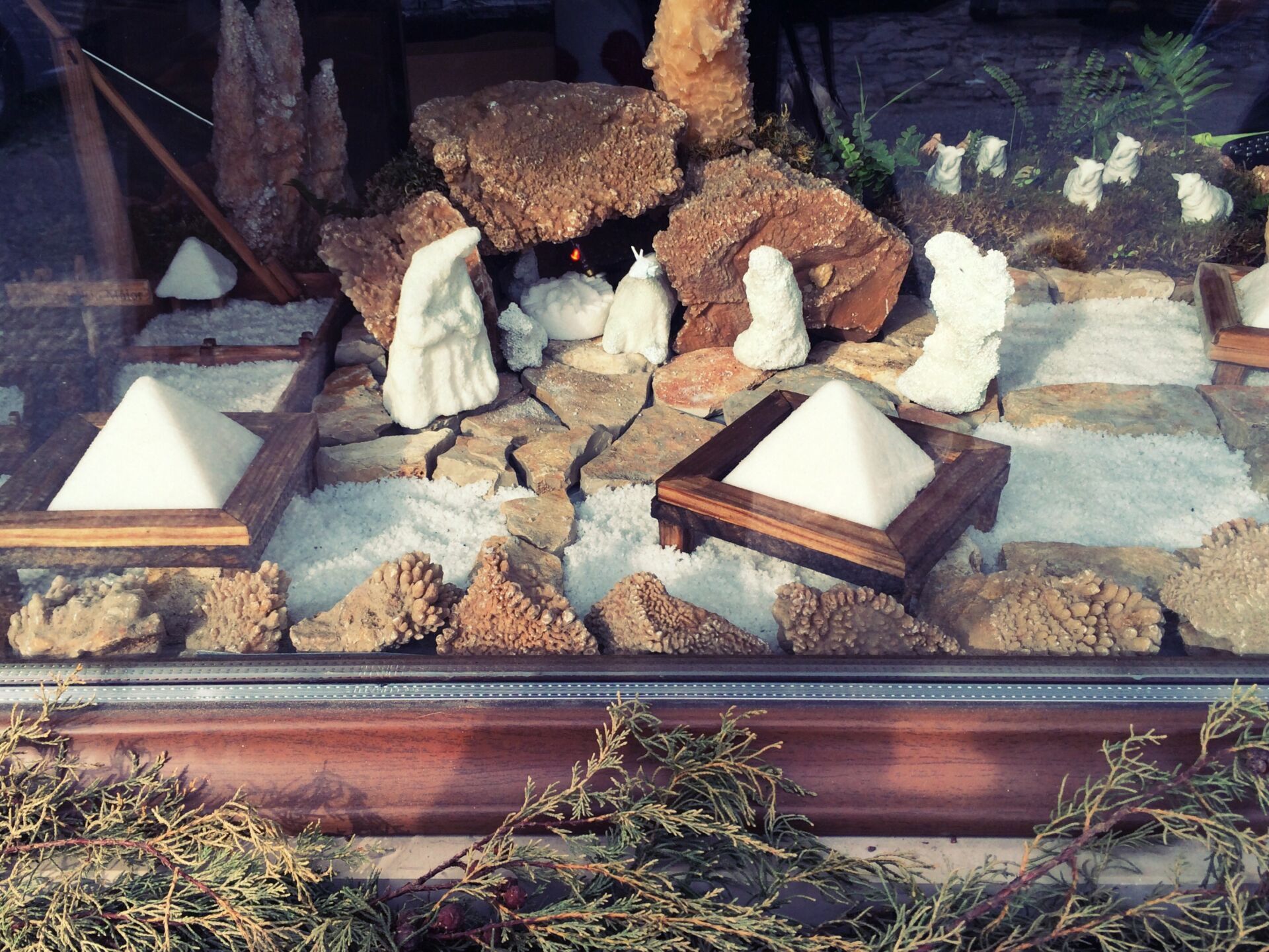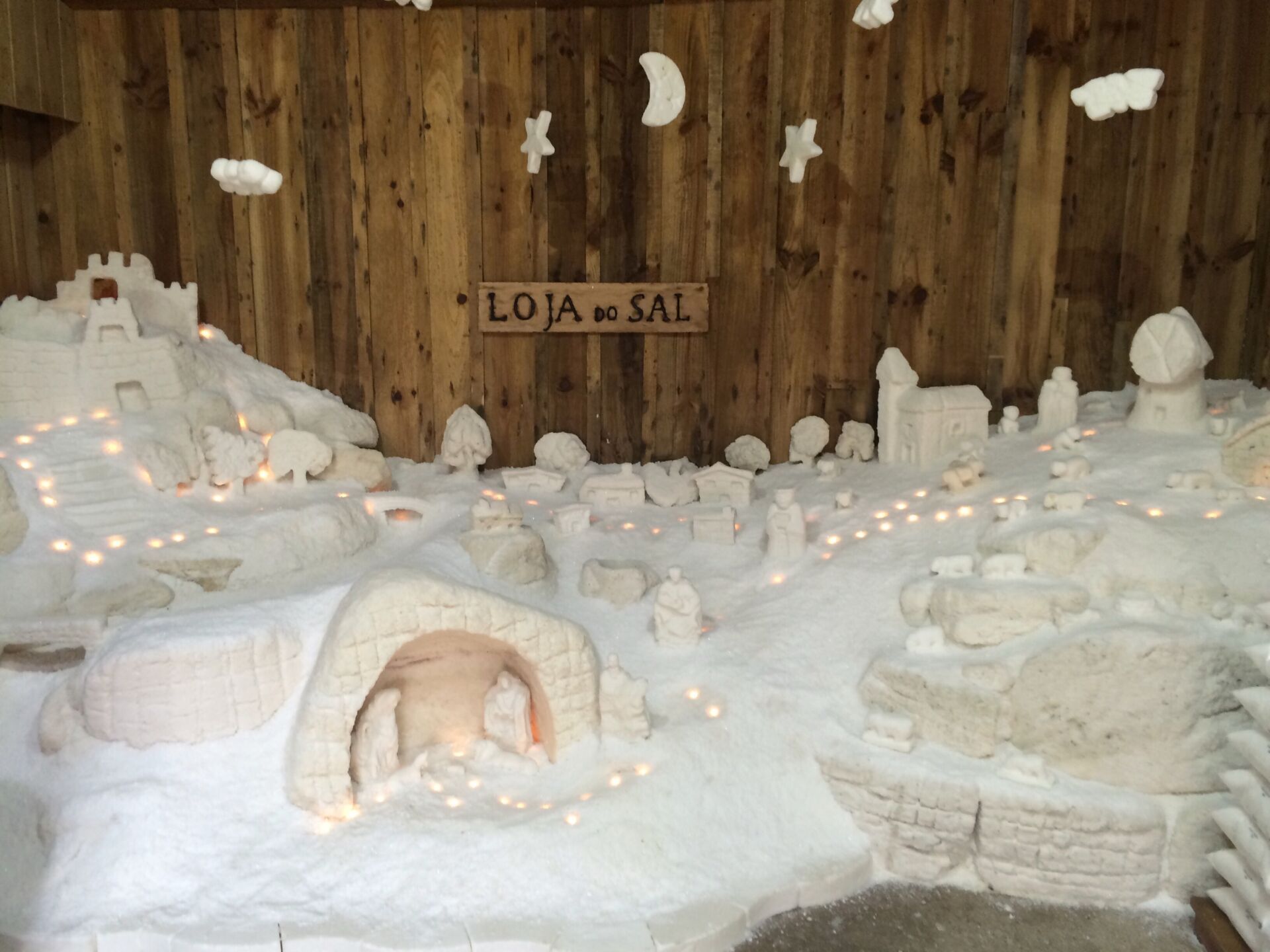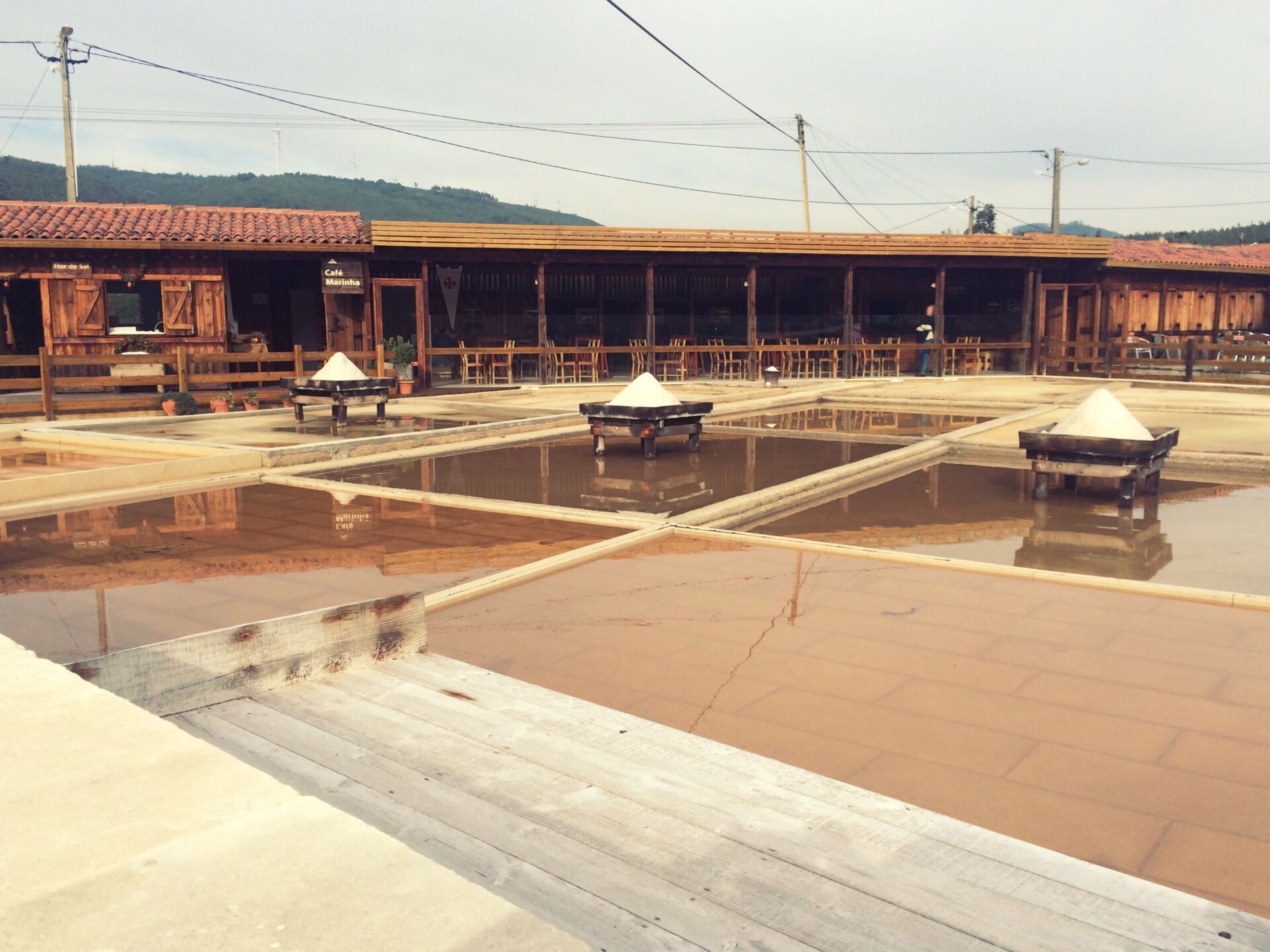Imagine being a girl taking her animals to pasture. You get thirsty and take a sip of water from a nearby spring, only to find out it tastes seven times saltier than sea water! Disgusting! You then go home and tell your parents about it – your father and neighbors all rush out to explore. Story has it, that’s how the natural salt mines of Rio Maior were discovered.
Whilst the exact date of this tale is unknown, we do know that the salt mines were already known to exist in 1177, as they were referred to in a sale document for the land around the mines. (For chronological reference, Portugal became a country in 1143 and was officially recognized as such by the Pope in 1179.) It is believed, however, that the mines had been explored by both Romans and Arabs prior to the country’s inception. Today, you can actually go visit the salt-works (also known as Salinas da Fonte da Bica), found in the Parque Natural das Serras de Aire e Candeeiros, about 70 minutes from Lisbon.
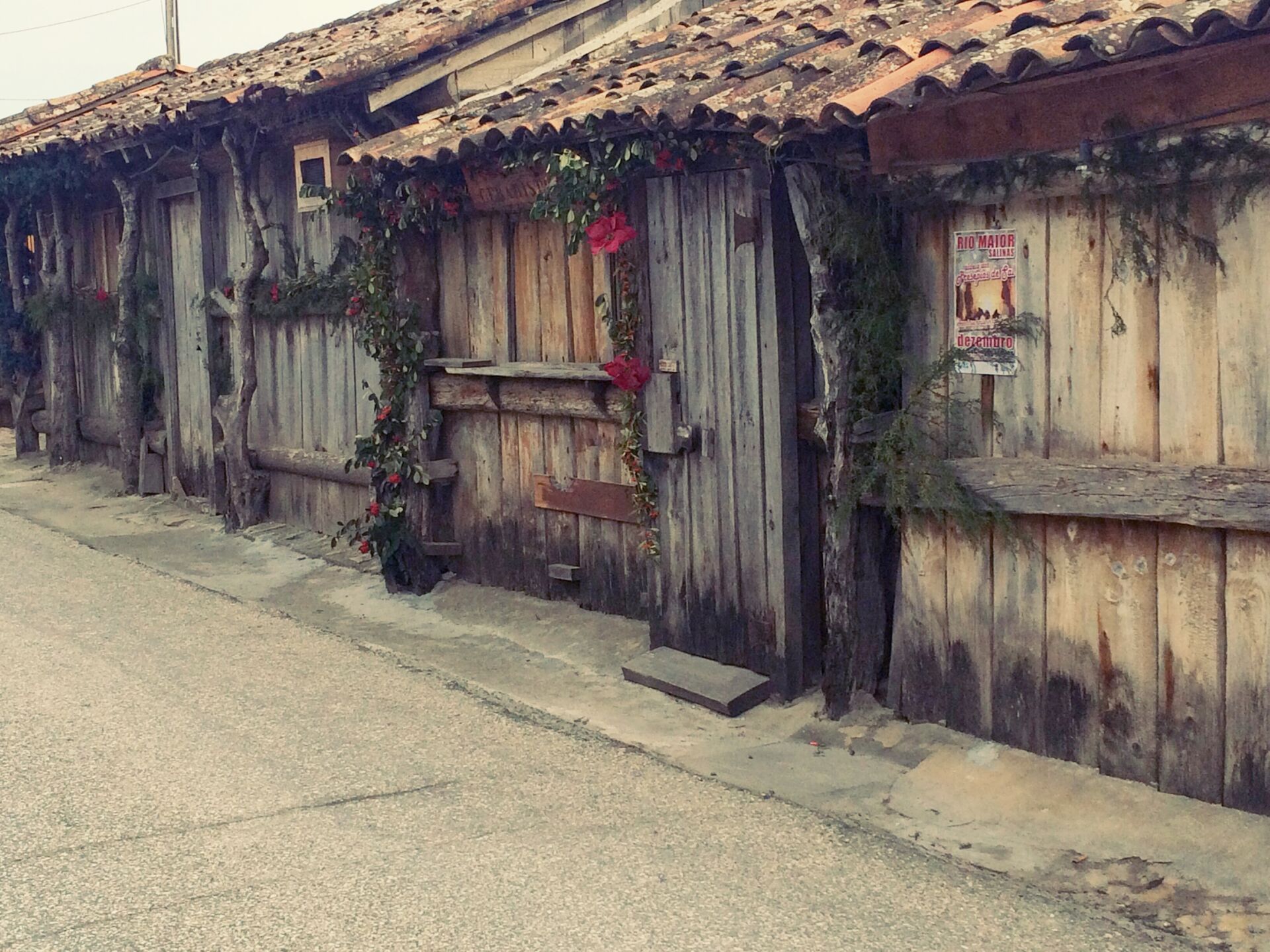
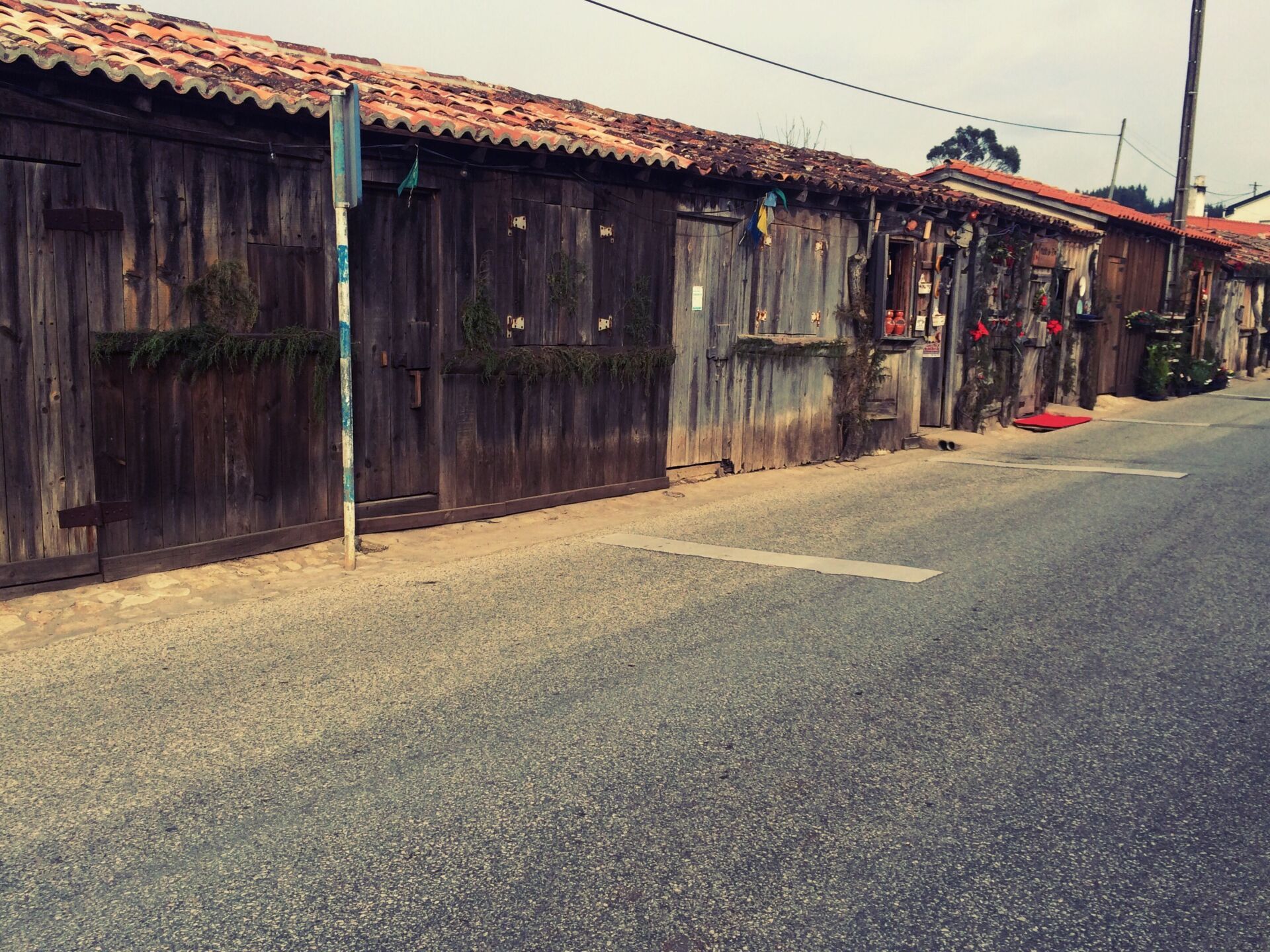
Once the salt water is extracted, it is exposed to the wind and sun, which evaporate the water, leaving behind only the salt. The salt is stacked into pyramid shapes to dry out completely until it is ready to be packaged. Small wooden houses are used for storing the salt because the wood, unlike metal, doesn’t react with the salt. It was also the only material available for several centuries.
So how do you get your hands on this unique, completely natural salt to make delicious meals? I’ve found a great selection here, ready for online shopping. It should last you a long, long time (Portuguese salt is saltier than in other countries, I’ve found) and is a fantastic gift for anyone who loves to cook with the best ingredients.
